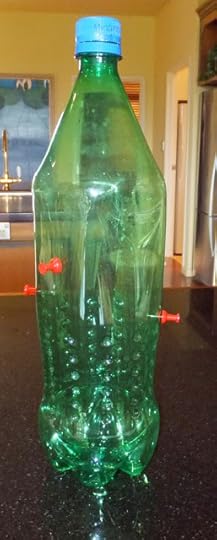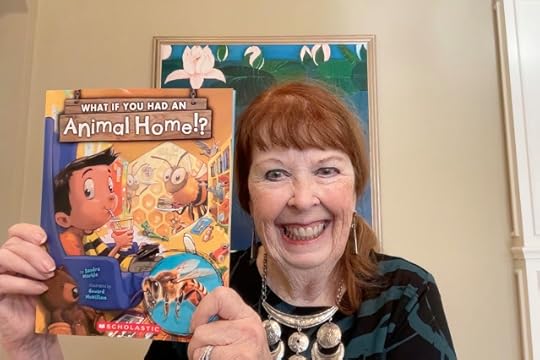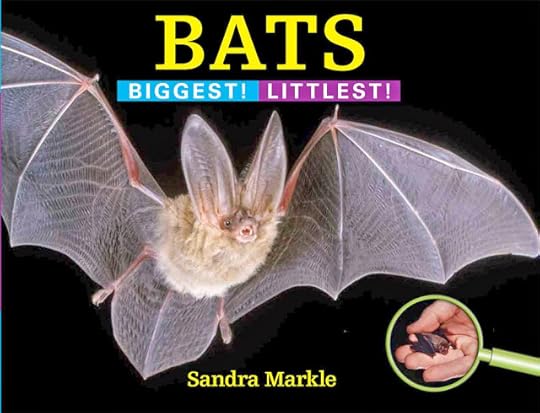Sandra Markle's Blog, page 3
May 20, 2024
HOST A SUMMER SCIENCE MAGIC PARTY!
I'm known as Ms Whiz from my science magic show on TV in Atlanta, Georgia some years ago. I still share science magic during n-person OR virtual school visits. But you can invite your friends to a party and do some science magic too.
Start with AIR POWER MAGIC!

This could get messy so work over a sink the first time. Even better try this outdoors.
You'll need:A study plastic plateA paper towelA sturdy plastic glass (juice size works best)
Fill the plastic glass nearly full of water. Fold the paper towel into fourths and place it on the middle of the plate. Next, turn the plate and towel over the cup like a lid. Hold the plate against the top of the cup with your fingers while you turn the whole system over.
Now the glass is on top. Be sure it is straight up and down. Hold on to the cup with the hand that isn't pressing up on the plate. Then--slowly--take your hand away from the plate. The plate won't fall and the water will stay inside the glass.
Air pressure makes this work because of air pressure. There is now more below the plate pushing up than inside the glass pushing down. Be sure and keep the glass straight or you will get a big splash!.
NO LEAKS
You can poke holes in a bottle full of water without it leaking--with the help of air pressure.
You'll need:an empty 1 or 2 liter plastic soft drink bottle with a screw-on cap.3 pushpins (the kind used to display things on a bulletin board)
Work outdoors or at the sink. Fill the bottle to the very top with water. Screw on the cap, making sure it's tightly sealed.
Next, stick the pushpins into the bottle, one at a time. Then have your adult partner hold the bottle by its cap while you carefully twist and tug out the pushpins.
Surprise! If water leaks out at all, it quickly stops or slows to a tiny trickle.
The magic is that air pressure is at work again. Air doesn't simply push down, it exerts force in all directions. The force of the air pushing in on the water at the holes you made is greater than that of the water inside the bottle pushing out.
What do you think will happen when you take the cap off the bottle? Try it--just be sure the bottle is over the sink. 😀
ONE MORE...
THE MAGIC FLOATING BALL
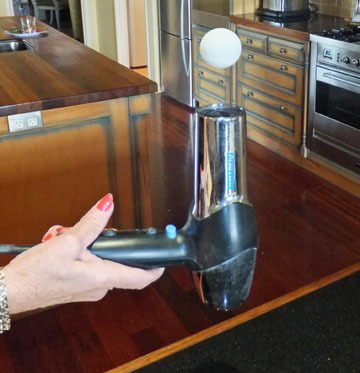
You'll need:A blow-dryerA Ping-Pong ball
Hold the blow-dryer with the nozzle aimed straight up. You may want your adult partner to do that for you. When the dryer is switched on to "high", place the ball in this column of fast-moving air so it's about 5 inches above the nozzle. Let go of the ball and quickly take your hand away.
As long as the air current is shooting striaght up, the Ping-Pong ball will float suspended above the dryer's nozzle.
This "magic" happens because fast-moving air has less pressure than more slowly moving air. So the Ping-Pong ball is trapped inside the column of fast-moving air. Here the ball is pushed upward by a jet of air with enough force to keep it from falling, but not enough to blow it any higher.
These science magic tricks are sure to be a party hit.
*By the way, be sure to come up with a cool name for yourself as the star of your party?
Published on May 20, 2024 09:01
May 7, 2024
FIRST PEEK PREVIEW
Published on May 07, 2024 10:39
March 31, 2024
EYE SPY AN ADVENTURE!
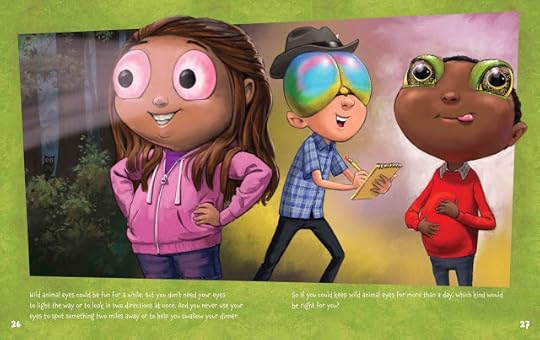
It's story time! Have you read WHAT IF YOU HAD ANIMAL EYES!? Level 2 Reader yet?
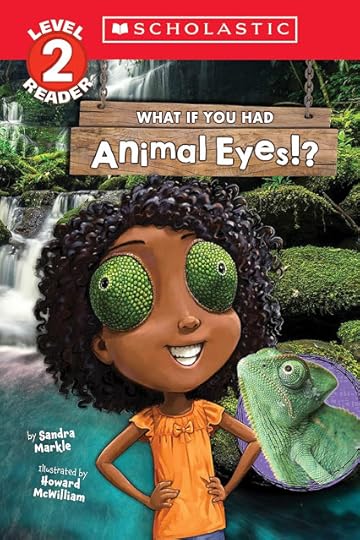 Children can either pick their own animal from the book or put the names of the featured animals on slips of paper and let them pick one to claim their animal eyes. The challenge is to imagine waking up one day and having that animal's eyes for one whole day.
Children can either pick their own animal from the book or put the names of the featured animals on slips of paper and let them pick one to claim their animal eyes. The challenge is to imagine waking up one day and having that animal's eyes for one whole day. 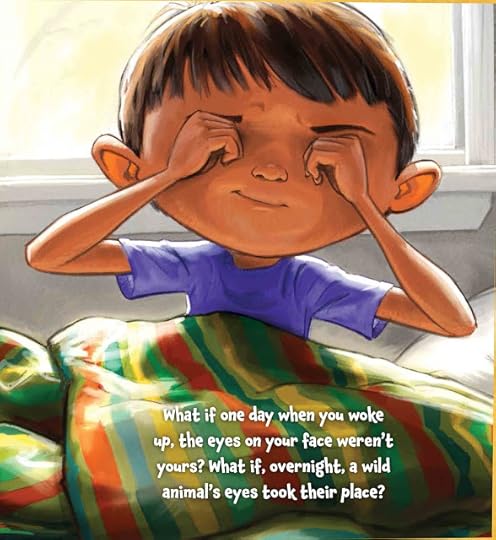
ASK THEM TO THINK AND IMAGINE: What adventure did you have? Did your animal eyes help you solve a mystery? Did those eyes help you be a hero? Did those animal eyes cause you any problems?
Then have them tackle this challenge: Write a story about having those animal eyes for a day in three short paragraphs:
1. One to launch what happens.
2. One for the action in the middle.
3. One for the conclusion.
Even better if they draw a picture of themselves with those eyes.
Teachers: Why not wrap this activity up by building a class bar graph for favorite animal eyes. You could color in bars on paper. Or have everyone line up and physically be part of a favorite animal eye graph.
Put me in your graph as voting for my favorite animal eyes which are on pages 18-19.
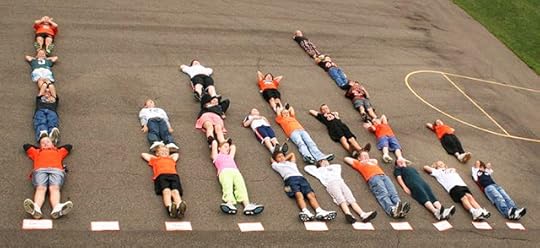 I'd love to know your student-graph winners!
I'd love to know your student-graph winners! Please post in the comments.
Published on March 31, 2024 08:21
March 8, 2024
I'LL READ TO YOU: RACE THE WILD WIND
Relax and enjoy as I read to you.
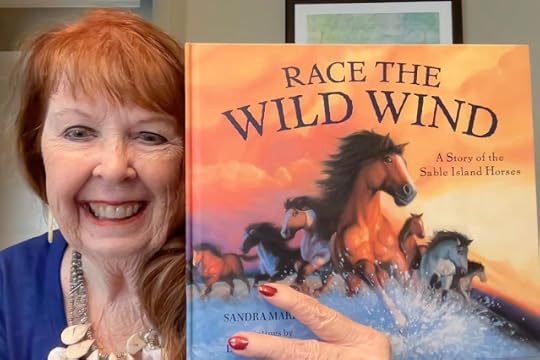
Click to start RACE THE WILD WIND (Bloomsbury)
And enjoy your own copy from Amazon
Published on March 08, 2024 11:12
February 19, 2024
GO BATTY FOR BATS!
Reading BATS: BIGGEST! LITTLEST! is the perfect way to start getting to know these amazing animals. Then keep on exploring and learning about bats as you have fun with these activities.
Visit My Cave
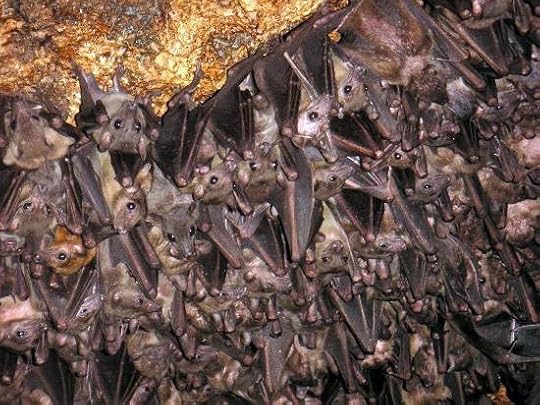
What's it like to live like a bat?
Cover a table on three sides with a blanket or paper to create a cave. Have your family or a group of friends crawl inside your pretend cave with you. While you're there with this group, think about these questions.
Why is a cave a good home for small bats, like Mexican Free-tailed Bats? Why do you think big bats, like Grey-Headed Flying Foxes, camp in the open in trees instead?What are some problems to sharing a cave with other bats?
What Good Are Bats?
 Check out the hand-like structure of a bat's wings.
Check out the hand-like structure of a bat's wings.Try this to find out.
Take a large bowl of popcorn kernels to the gym or outdoors to a paved area of the playground. Work with friends to scatter 50 popped kernels on the floor or ground. Count to ten. Then have people place two more popcorn kernels next to each original kernel. This is as if the insect pests have multiplied.
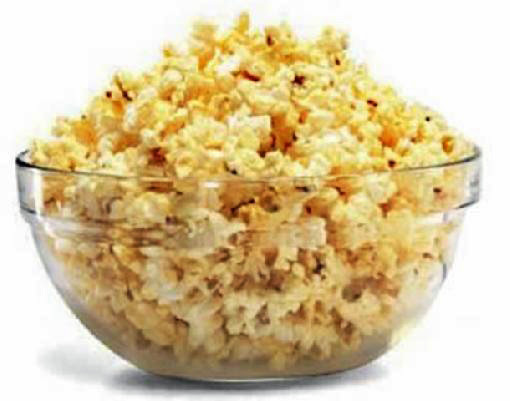
Now pretend you are an insect-hunting bat. Have four others pretend they are too. While someone counts to five, have each “bat” pick up all of the insects they can carry. Then have other children place two popcorn kernels next to each remaining kernel.
Repeat these steps two more times, having “bats” collect “insects”. Then have any remaining “insects” multiply.
Now look at the results.How much of an affect did the “bats” have on the “insect” population?What limited how much of an effect the bats could have on the insects? What do you think would happen to populations of insect pests if there weren’t any bats?Bats for Good Measure
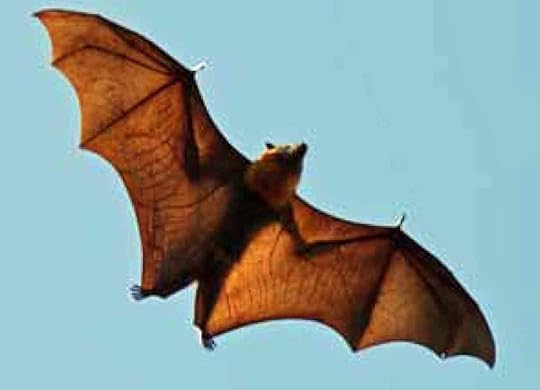 Again, here's a good chance to see the arm and hand-like structure of a bat's wing.
Again, here's a good chance to see the arm and hand-like structure of a bat's wing.The wingspan of the largest flying foxes can be up to 6 feet (about 2 meters). Take string that length. Find at least 5 things about the same length. What are they?
Now, measure each of these things. Find out how longer or shorter each is compared to a large flying fox’s wingspan. The teacher’s deskThe class’s two shortest students lying head to feet on the floor.The classes two tallest students lying head to feet on the floor.Your teacher’s armspan (from fingertip to fingertip with both arms stretched out)The wingspan of the Bumblebee bat is 6 inches (15 centimeters). Take a piece of string that length. Find at least 5 things about the same length. What are they?
Now, measure each of these things. Find out how much longer or shorter each is compared to a Bumblebee Bat’s wingspan.
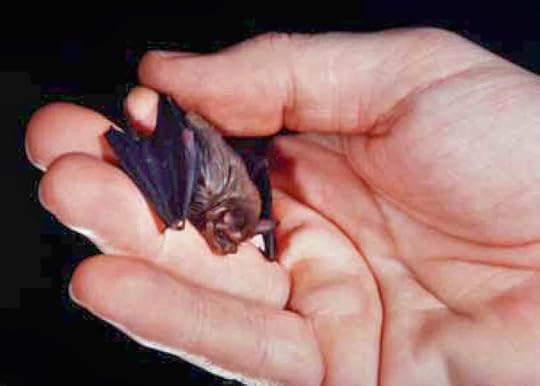
The smallest book in the classroomYour pencilThe shoe of the student with the littlest footYour right hand span (from thumb to little finger with your hand spread wide). Draw around your hand span on a piece of paper. Then compare to your bat wing measuring string.I hope you've enjoyed this chance to dig deeper into BATS: BIGGEST! LITTLEST! Check out the other books in this series from Boyds Mills:
SHARKS: BIGGEST! LITTLEST! SNAKES: BIGGEST! LITTLEST! INSECTS: BIGGEST! LITTLEST! SPIDERS: BIGGEST! LITTLEST!
Published on February 19, 2024 14:20
January 10, 2024
TAKE A BITE WITH GREAT WHITE SHARKS!
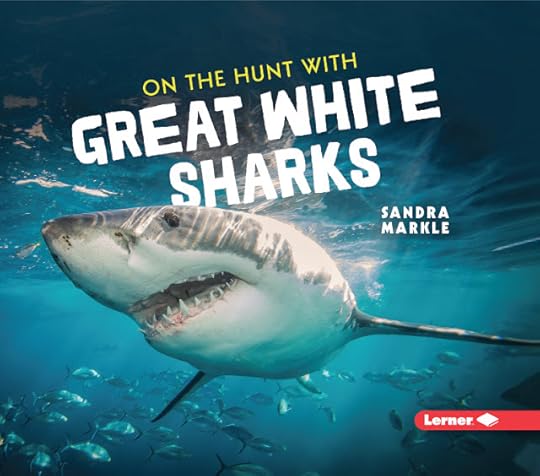
Size Matters to these hunters!
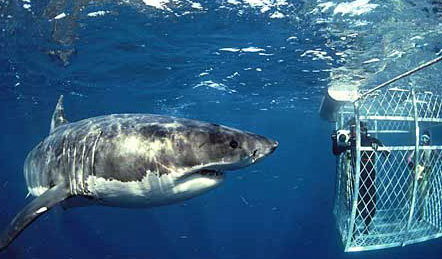 An adult Great White Shark never stops growing. So it gets a little longer every year of its life. They're born alive and about four feet (1.2 meters) long at birth. One of the biggest kinds of sharks, adults often grow to be 20 feet (6 meters) long. Measure off a piece of string that length. Stretch it out on the floor and lie down next to it with your feet at one end of the string. Set something, like a pencil, across the string next to your head. Use a measuring tape to find out how many feet/meters shorter you are than a Great White Shark.
An adult Great White Shark never stops growing. So it gets a little longer every year of its life. They're born alive and about four feet (1.2 meters) long at birth. One of the biggest kinds of sharks, adults often grow to be 20 feet (6 meters) long. Measure off a piece of string that length. Stretch it out on the floor and lie down next to it with your feet at one end of the string. Set something, like a pencil, across the string next to your head. Use a measuring tape to find out how many feet/meters shorter you are than a Great White Shark.Now, find at least 3 things about the same length as a Great White Shark. What are they? Now find out how much longer or shorter each of the following things is compared to a Great White Shark.
*The class's two tallest students lying head to feet on the floor
*Your teacher
Now peek inside my Scholastic book that features great white sharks to discover more.
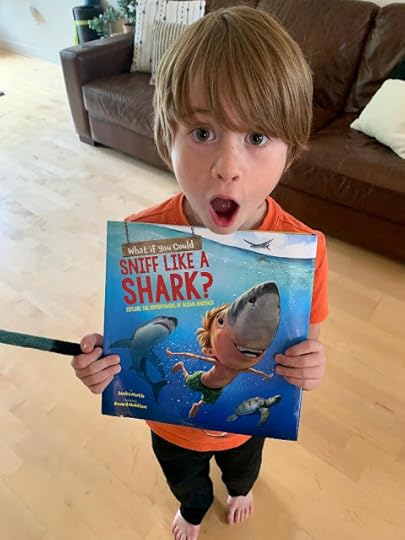
READ AND DISCOVER!How does a great white shark sense smells underwater?click on image to make larger and read.
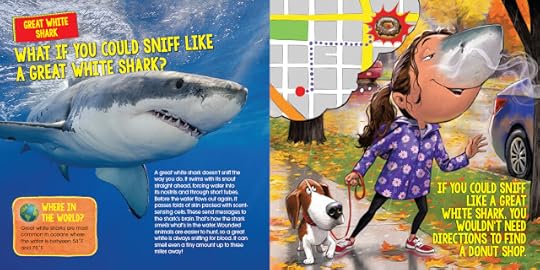 When would having a super sense of smell be GREAT?When would having such a good sense of smell be BAD?
When would having a super sense of smell be GREAT?When would having such a good sense of smell be BAD?
NOW CHECK OUT MORE
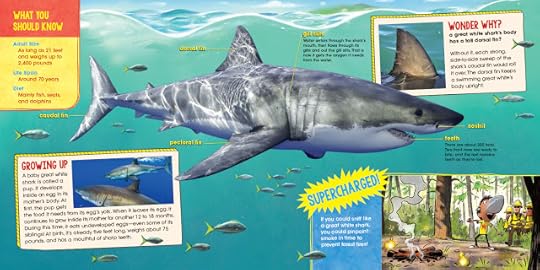 BONUS FACTS ABOUT GREAT WHITES:
Pups are on their own immediately after they are born.
BONUS FACTS ABOUT GREAT WHITES:
Pups are on their own immediately after they are born.
Great White Sharks swim while sleeping. They breath through gills and need to move to push water through their gills.
Their bodies are not designed to let them swim backwards. So they can't backed up.
Published on January 10, 2024 06:43
December 9, 2023
BEST WISHES! WATCH OUT FOR WHAT IS COMING in 2024!

Hooray for my 8 books released in 2023:*Nature's Cleanup Crew series (Lerner) Tasmanian Devils, Jackals, Vultures, Wolverines*The Great Giraffe Rescue (Lerner)*Wild Inventions (Lerner)*Could You Ever Dive With Dolphins!? (Scholastic)*Could You Ever Waddle With Penguins!? (Scholastic)
BUT I CAN'T WAIT TO SHARE WHAT'S COMING IN 2024!
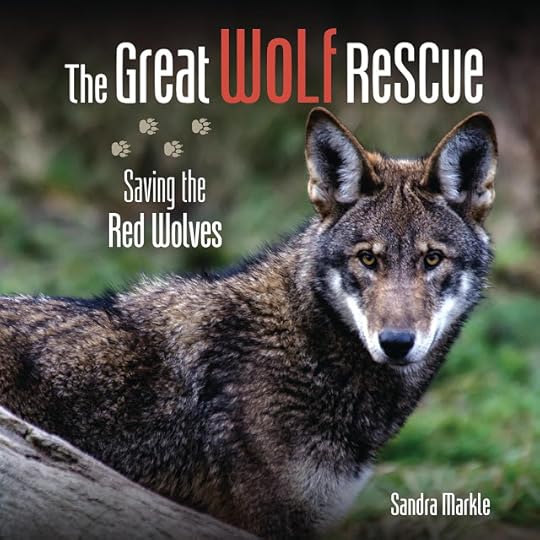

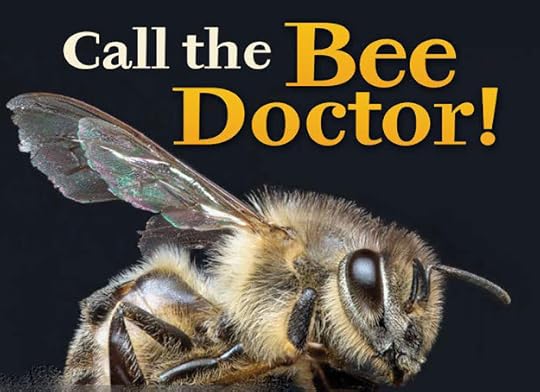

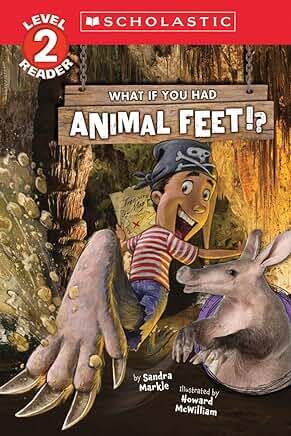
Published on December 09, 2023 08:05
BEST WISHES!
Published on December 09, 2023 08:05
November 29, 2023
DON'T MISS THIS DECEMBER 1st EVENT!

MARK YOUR CALENDAR and don't miss Scholastic's Storyvoice event with SANDRA MARKLE this Friday December 1st at 11:30amEST. Reading, Adventures with penguins in Antarctica, Science activity, Q&A. FUN!
Published on November 29, 2023 05:37
November 16, 2023
WHAT IF YOU HAD ANIMAL FEET FUN!?
HOP! SKIP! STEP into WHAT IF YOU HAD ANIMAL FEET FUN!
LET’S STOMP
Have each child choose his or her favorite animal feet.
Choose some foot stomping music and have the children spread out at least an arm’s length apart. Then turn on the music and have kids dance where they’re standing.
NOW, imagine having kangaroo feet. Invite them to share how that might change how they do each of these activities:Run a raceTake a bathPlay baseball
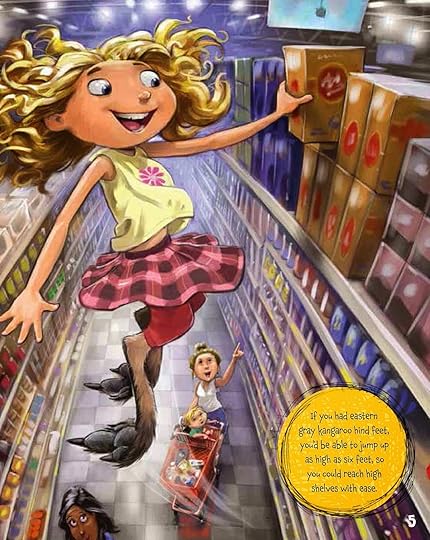
The Rest of the Story
The picture below shows only one moment in a story captured in WHAT IF YOU HAD ANIMAL FEET!?. Now imagine--and tellWhat led up to the moment shown in the picture?
What is really happening in the picture?
How is this story likely to end?
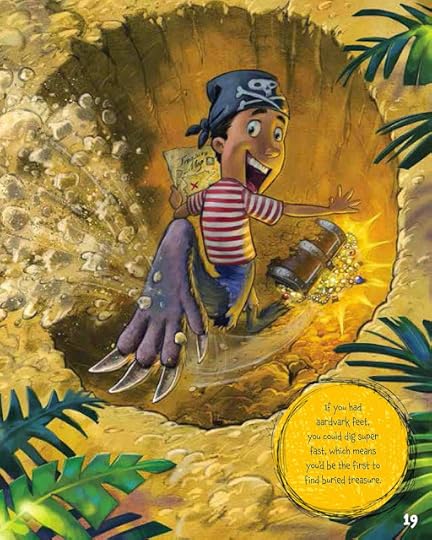
NEW FEET
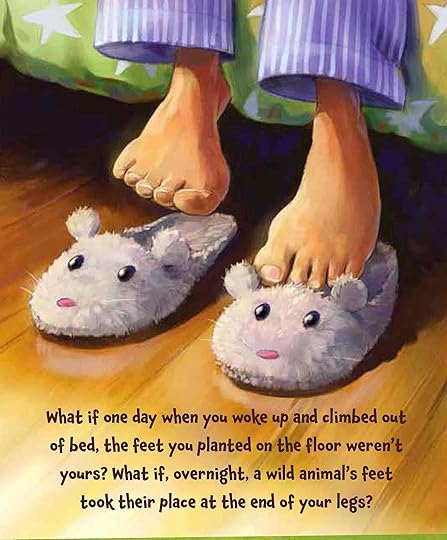
Now have children think about which of the animal feet in WHAT IF YOU HAD ANIMAL FEET!? they would like to have--for a day.
WHICH ONES? WHY?
Click to link to getting your very own copy of WHAT IF YOU HAD ANIMAL FEET!? coming soon also as a Level 2 Reader.
Published on November 16, 2023 14:21

